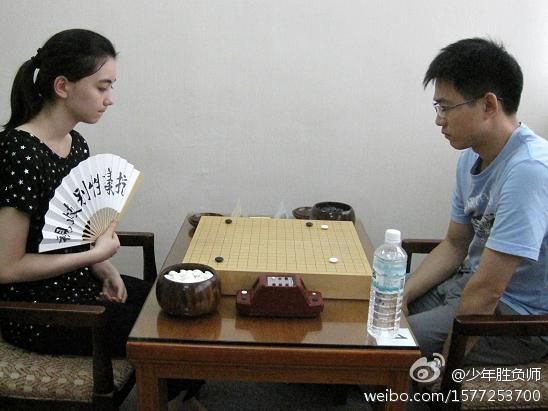Gender Discrimination in Go
Gender discrimination in Go is a controversial subject.
A gender disparity appears to exist, and there are fewer female amateur and professional go players than male players. Most major international tournaments are won by men. Women are a minority in go and many international go associations have taken measures to promote female participation in go. Female-only go tournaments are held in parallel with major co-ed title tournaments in some East Asian countries.
It is unclear if active gender discrimination or sexism exists at a systemic or individual level.
| Table of contents |
Gender disparity in go
- See also: Playing Strength and Gender
According to a 2016 survey by the International Go Federation, female go players constitute less than 20% of the player base in most countries.[1]
The only open professional title that has ever been won by a female player was the Guksu Cup by Rui Naiwei in 1999.
In August 2021, only one female professional (Choi Jeong (9p)) was in the top 100 ranked go players. 13 women are ranked among the top 300 go players.[8]
History of gender discrimination in go
Premodern Period
In ancient China, weiqi (go) was considered one of the “four arts” of an cultured scholar-gentleman[2], and it is a feature of Confucianism. It was traditionally considered a masculine past time. According to the book Go Nation: Chinese Masculinities and the Game of Weiqi in China, the author Dr. Marc Moskowitz asserts that Chinese language utilized in the game reinforces traditional Chinese ideals of masculinity.[3]
In classical Japan, female go players were rare. The four go houses were nominally Buddhist institutions and subject to religious policies, so Wikipedia (English) states that “therefore all players were male”.[4] However, there are appears to have been exceptions such as Hayashi Sano and Kita Fumiko. The Wikipedia article for Kita Fumiko (Japanese) states that she was required to shave her head and dress as a boy until she reached professional 1-dan.[5] Kita Fumiko is regarded as the “mother of women’s go”, and nearly all female professional go players prior to World War II were her students.
Modern Period
In 1952, the All-Japan Women's Championship was established as the first major Japanese women-only go event. In 1982, it was renamed to the Women's Honinbo Cup. Since then, there have been a number female-only tournaments that were established in Japan, Korea, and China. The Women's Meijin was established in 1989. The Women's Kisei was established in 1998. With the exception of Rui Naiwei (1999 Guksu Cup) and Ueno Asami (2019 Dragon Star Cup finalist), female professionals have not seen much success in open tournaments with mixed genders. In 1981 the [Womens´s Go Players Association] was founded, with Ito Tomoe as the first President.
With the globalization of go, efforts have been made to make it more inclusive. Pair go was invented in the 1980s, traditionally involving one male and one female player on a team.[3] Pro commentary on Japanese and Korean TV is traditionally an act of male explainer and female assistant.[7]
The first Chinese national women’s weiqi team was established in 2000. In an interview, Fang Weijing (2p) recounts that the women's team was established because Korea had many female players, and China wished to compete at the same level. [6]
- In a single instance, the 2nd Qiandeng Cup played in August 2011, six female professionals were invited despite not meeting “prize money won” requirements. After some of them learned that the male players who did meet the requirement, received game fees, they wanted to receive game fees as well. Having been denied said fee, the female players who had not yet cancelled their registration withdrew from the tournament. Afterwards, Hei Jiajia (aka Joanne Missingham) wrote the fan pictured above (see article) or 2011 Qiandeng Cup Incident.
- In some countries, there are championships open to women only; for example Japan's Women's Honinbo, Women's Meijin, Women's Kisei.
In popular culture
In Morie Satoshi's manga, Hoshizora no Karasu the protagonist (a female insei) experiences sexism while playing go in modern Japan.
Discussion
Data
- There are many data sets readily available for further inquiry: professional results[2], European Go Database and AGA Go Database.
See Also
References
- [1]
![[ext]](images/extlink.gif) The International Go Federation: Go Population Survey (Feburary 2016)
The International Go Federation: Go Population Survey (Feburary 2016)
- [2]
![[ext]](images/extlink.gif) Wikipedia: Four arts (Accessed August 2021)
Wikipedia: Four arts (Accessed August 2021)
- [3]
![[ext]](images/extlink.gif) USC US-China Institute: The Game Of Go: Ancient Applications And Contemporary Connotations 围棋游戏:古代应用及当代内涵 (2016)
USC US-China Institute: The Game Of Go: Ancient Applications And Contemporary Connotations 围棋游戏:古代应用及当代内涵 (2016)
- [4]
![[ext]](images/extlink.gif) Wikipedia: Four Go Houses (Accessed August 2021)
Wikipedia: Four Go Houses (Accessed August 2021)
- [5]
![[ext]](images/extlink.gif) Wikipedia: 喜多文子 (Accessed August 2021)
Wikipedia: 喜多文子 (Accessed August 2021)
- [6] (Youtube)
![[ext]](images/extlink.gif) Weiqi Wonders: Conversations about the Game of Go in China. (2020)
Weiqi Wonders: Conversations about the Game of Go in China. (2020)
- [7] Example:
![[ext]](images/extlink.gif) https://www.youtube.com/watch?v=-7yGzwamVOc
https://www.youtube.com/watch?v=-7yGzwamVOc
- [8]
![[ext]](images/extlink.gif) Go Ratings
Go Ratings
- [2] Example sources: gokifu.com,
![[ext]](images/extlink.gif) https://badukmovies.com/pro_games
https://badukmovies.com/pro_games

![Sensei's Library [Welcome to Sensei's Library!]](images/stone-hello.png)